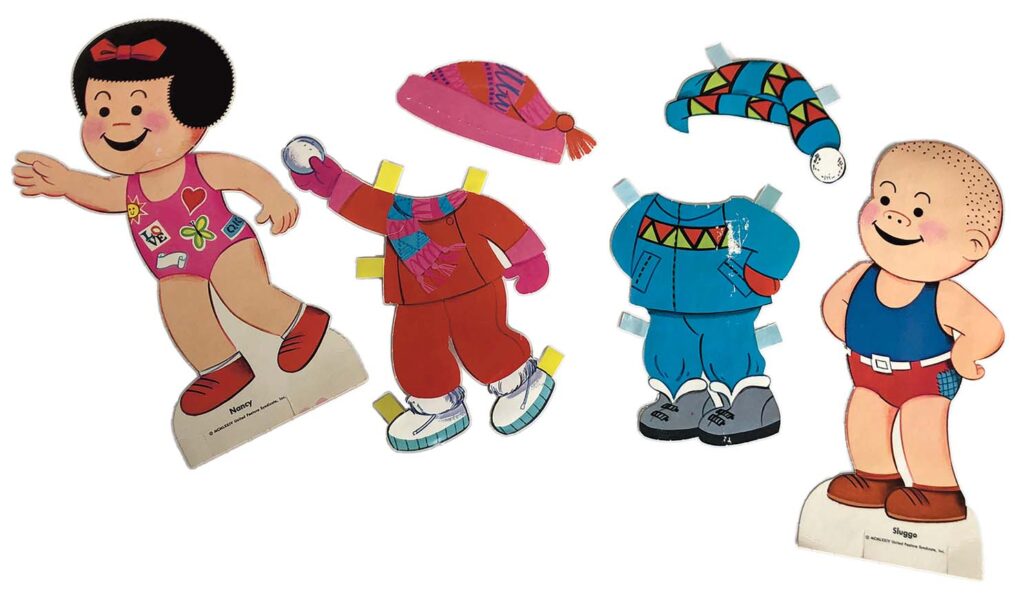
Dorri Partain
Contributor
Paper figures that can stand up and be “dressed” in paper clothing are nearly as old as paper itself.
“Little Fanny” was the first mass-produced paper doll, appearing in London’s stationery and book stores in 1810. America’s McLoughlin Brothers began producing paper dolls in 1828, featuring young ladies with names such as Dottie Dimple, Lottie Love, and Jennie June. French ballerinas and England’s Queen Victoria were also represented as paper dolls.
Whitman Publishing of Racine, Wis., began producing a wide array of children’s books, puzzles and paper doll sets in 1934. Families, babies, bride and groom “wedding party,” sisters or twins, and movie stars were all depicted in suitable undergarments and a variety of clothing styles in a booklet with removable pages or a boxed set.
While some sets were available with all pieces pre-cut, others left it up to the child to carefully cut out the dolls and all their clothing, being sure not to cut off the tabs that would hold the clothing onto the doll.
Through licensing, a number of television and cartoon characters were available as paper dolls. Shown here, Nancy and her best friend Sluggo had a choice of outfits, from their usual comic page clothing to gear for rainy and snowy days, including hats.
Nancy was created by comic artist Ernie Bushmiller (1905-1982) and first appeared in 1933 as the niece of character Fritzi Ritz. Bushmiller took over the character and strip from artist Larry Whittington, who started the strip in 1922. Fritzi was a young single woman with an on-and-off fiancé named Phil Fumble, but the addition of Nancy proved popular enough that the strip’s name was changed to “Nancy” in 1938 and Bushmiller added her friend Sluggo to her daily antics.
Following Bushmiller’s death, comic artists Al Plastino, Mark Lasky, Jerry Scott and Guy Gilchrist continued the strip while putting their own spin on the character. In 2018, Andrews McMeel, which syndicates the Nancy strip, announced that Olivia Jaimes would take over the comic; Jaimes has returned the strip to Bushmiller’s style and Aunt Fritzi as Nancy’s guardian, while updating the strip to include cell phones and other modern references.
Dated MCMLXXIV (1974) and copyrighted by the United Feature Syndicate, this two-doll set would have sold for 79 cents.


















